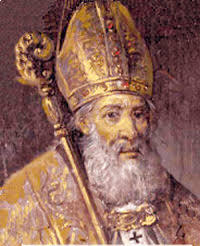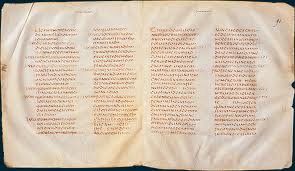
Summary: St Eusebius of Vercelli, bishop was exiled by the emperor Constantius because of his opposition to Arianism, suffered many hardships, but was eventually restored to his diocese. Noted for his preaching, his doctrinal orthodoxy, and his defence of Saint Athanasius.
 Vercelli is an ancient town in Piedmont, northern Italy, situated in the plain of the river Po between Milan and Turin. Eusebius served here in the fourth century first as a lector and later bishop. He was an indomitable defender of the divinity of Christ against Arianism.
Vercelli is an ancient town in Piedmont, northern Italy, situated in the plain of the river Po between Milan and Turin. Eusebius served here in the fourth century first as a lector and later bishop. He was an indomitable defender of the divinity of Christ against Arianism.
Patrick Duffy tells his story.
Which Eusebius?
In the fourth century there were at least three other men of historical significance called Eusebius. The other three were all Easterners by birth: Eusebius of Caesarea was a Church historian; Eusebius of Nicomedia was an Arian bishop; and St Eusebius of Samosata was killed by an Arian woman who threw a brick at his head.
Bishop of Vercelli with Clergy Living a Common Life
Eusebius of Vercelli was born in Sardinia and studied in Rome. He became a lector (reader) and may have served at Rome first and then at Vercelli, where he was made bishop by Pope Liberius. At Vercelli he set up a kind of monastic rule for the clergy to live in common with other priests as St Augustine did later at Hippo.
 The Virgin Mary in Glory with Archangel Gabriel, and Saints Eusebius of Vercelli (seated), Saint Sebastian, and Saint Roch, Sebastiano Ricci. (c/f image right)>>>
The Virgin Mary in Glory with Archangel Gabriel, and Saints Eusebius of Vercelli (seated), Saint Sebastian, and Saint Roch, Sebastiano Ricci. (c/f image right)>>>
Struggle against Arianism
Pope Liberius sent Eusebius to meet the emperor Constantius II (337-361) about the problem of Arianism and the status of Athanasius of Alexandria, who was being attacked for his strong views. This resulted in a council being held at Milan in 355. Eusebius insisted on everyone first accepting the Nicene Creed. But when some wanted to condemn Athanasius, Eusebius refused, insisting that Athanasius be allowed to defend himself. Also he insisted that the emperor should not influence Church decisions, and that there should be a separation of powers between Church and State.
Exiled in the East
Because of this singularity of outlook and his defence of Athanasius, Eusebius had to go into exile in the East until the death of Constantius II in 361. During that time he visited Palestine, Alexandria in Egypt, and Antioch.
Attended Athanasius’s synod of 362
On the accession of Julian in 362, exiled bishops were free to return to their sees. Eusebius went with Athanasius to Alexandria and there attended Athanasius’s synod of 362 which confirmed the divinity of the Holy Ghost and the orthodox doctrine concerning the Incarnation. The synod also agreed both to deal mildly with repentant bishops who had become Arians under pressure, but to sanction the Arianising leaders.
Struggle against Arian Bishop Auxentius of Milan
Back in Vercelli, Eusebius continued along with Hilary of Poitiers to uphold the Nicene doctrine especially against the Arian bishop Auxentius of Milan. Although he is sometimes referred to in the middle ages as a martyr, this was more to honour the sufferings he endured in standing up for the true faith. There is no evidence that he was put to death, but died naturally in 371.
Codex Vercellensis of the Vetus Latina

In the cathedral at Vercelli there is an early manuscript ‘Codex Vercellensis’ of the oldest Latin Gospeltexts before St Jerome’s Vulgate, called the Vetus Latina. It is generally agreed it was written by Eusebius.
__________________________
******************************
Memorable Quotation for today
“May I be no one’s enemy,
and may I be a friend of that which is eternal and abides.
May I never quarrel with those nearest me:
and if I do, may I be reconciled quickly.
~ St Eusebius of Vercelli ~
**********************************